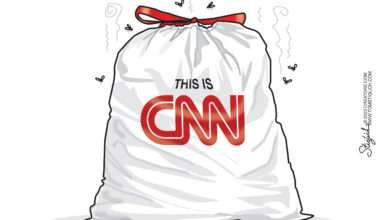The truth about the trade imbalance
At no time besides elections does the trade imbalance — the difference between the monetary value of a country’s imports and exports — become such an important yet poorly understood issue.
According to recent information compiled by the Census Bureau, the United States’ trade deficit as of June 2016 stands at $39.47 billion, down slightly from a previous level of $44.66 billion. Increasingly, politicians point to this number as a gauge of the broader economic health not only of America’s global economic standing, but also as a symptom of the wellbeing of domestic production. It becomes a bogeyman for the decline in manufacturing, the high-price of American produced goods and the movement of jobs overseas.
While these latter things may be basic economic realities, attributing them to the trade imbalance, which is essentially nothing but a statistic, is problematic.
As famed Austrian economist Friedrich Hayek wrote in his book Monetary Theory and the Trade Cycle, “All the phenomena observed in cyclical fluctuations, particularly price formation and its influence on the direction and the volume of production, have already been explained by the theory of equilibrium; they can only be integrated as an explanation of the totality of economic events by means of fundamentally similar constructions. Trade Cycle theory itself is only expected to explain how certain prices are determined, and to state their influence on production and consumption.”
In short, the trade balance exists only as a gauge for the levels of imports and exports between nations — America and China for instance — and is not intended to have any bearing on how specific policies that influence trade deals are viewed in relation to other economic issues such as production, jobs and prosperity.
One of the problems of such a view is that it ignores natural fluctuations which occur within the business cycle. In fact, it disregards the very idea that business has a natural cycle which responds to supply and demand issues at both the global and local levels of markets.
All America’s trade imbalance really explains is that the nation takes in less money from imports than it makes from exports. For consumers, this is actually a boon; it means the cost of goods coming in from overseas is low, a fact which increases sales, which in turn drives job growth and contributes to an increased amount of money flowing through the global market. In the end, the market as a whole is promoted even though individuals might benefit less from specific interactions.
Those who paint the trade imbalance as fundamentally “bad” are primarily thinking in the short-term, which tends to promote the false conception that global markets are static. However, as Michael Halpeirin notes in The Trade of Nations, “the international division of labor and the regional (and national) specialization of production is a long-run proposition. Changes in technology, new discoveries, rising standards of living, new needs, and changes in tastes, all of these affect the channels of trade and the structure of production in individual areas and countries.”
This is why the quick economic fixes offered up as solutions to the trade balance, most notably the levying of tariffs on foreign goods, have historically only worsened global market conditions.
Perhaps the most famous example of well-intentioned economic protectionism gone awry is the Smoot-Hawley Tariff. The tariff, which primarily targeted imported agricultural goods, is now widely believed to have been a significant contributing factor to the Great Depression.
Following the passage of the tariff into law in 1930, exports fell dramatically, from $7 billion in 1929 to $2.5 billion in 1932. Further, as the Cato Institute notes, “Foreign countries were flattened by higher U.S. tariffs on things like olive oil (Italy), sugar and cigars (Cuba), silk (Japan), wheat and butter (Canada). The impoverishment of foreign producers reduced their purchases of, say, U.S. cotton, thus bankrupting both farmers and the farmers’ banks.”
The disastrous impact of Smoot-Hawley highlights how domestic production and consumption is affected by the balance in global trade. Tariffs only worsen the trade imbalance because they drive up the costs of goods which are imported into the country. Manufacturers and retailers do not simply absorb the higher prices; they pass them onto consumers, which leads to a decline in consumption and the amount of money entering the country from imports, thus actually exacerbating the trade imbalance.
Tariffs are actually just another form of regulation. Many who descry the trade imbalance blame domestic over-regulation on raising the cost of business and driving it overseas. Yet, they do not recognize that tariffs and other protectionist trade mechanisms have exactly the same destructive impact on trade.





“Following the passage of the tariff into law in 1930, exports fell dramatically, from $7 billion in 1929 to $2.5 billion in 1932.”
That is not true!
International trade peaked in June 1929 and began to decline. Smoot-Hawley was passed a year later in June 1930 but did not began collecting additional tariffs until June 1931 two years after international trade began to decline. Before Smoot-Hawley collected the first dollar of tariff roughly 80 percent of the Great Depression trade decline had already happened.
Moreover, US tariffs were already high before Smoot-Hawley was passed. From shortly after the War of 1812 until the Kennedy Round of tariff reductions in 1967 the US was the most tariff protected economy on earth. During the time of tariff protection the United States make the transition from a producer of raw materials and agricultural products to an industrial power overtaking free trade Great Britain as the world’s most advanced economy. During that time none of the “boogie man going to get you” problems of tariffs warned about here happened. Not even higher prices relative to wages. Consumer prices rose immediately after imposition of tariffs but behind a wall of tariffs domestic production became so much more efficient that prices declined below foreign goods.
Free trade is an Ivory Tower theory surrounded by a bodyguard of lies. The real life experience of the United State refutes the notion we should fear tariffs. I challenge you to prove that currently overall prices are lower because of free trade. No study has shown it to be true. The claim is made because trade theory says it to be true. Under free trade demand for goods exported is increased. Increased demand causes price to increase. Under free trade consumers pay higher prices for the domestic consumption of exported goods. In order to promote exports the government tries to reduce the value of the dollar. That increases the cost of imports. Americans see this mostly in the price they pay at the pump as oil is priced in dollars. Americans are not seeing lower prices.